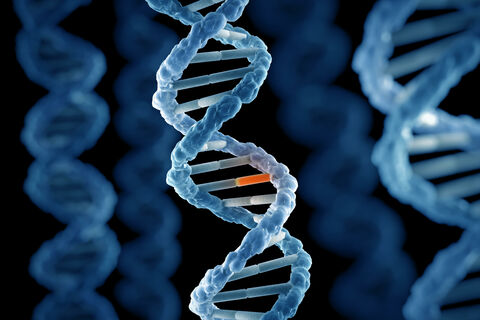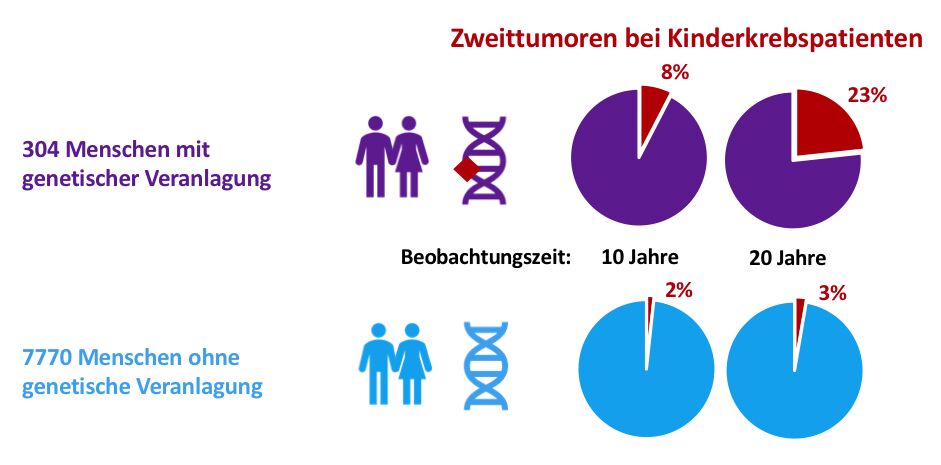
Risk factors for second tumours
The Childhood Cancer Research Group of the Institute of Social and Preventive Medicine (ISPM) at the University of Bern has been able to show that hereditary genetic predispositions increase the risk of new tumours after childhood and adolescent cancer by a factor of more than seven. The researchers investigated risk factors that can lead to second tumours. It was already clear that radiation and chemotherapy increase the risk of cancer. This was confirmed. What is new is the fact that genetic predispositions represent such a particularly high risk. First author Nicolas Waespe, MD, now recommends that the clarification of genetic causes of cancer in children and adolescents be intensified and that those affected be included in early detection programmes for second tumours.
The University of Bern study, published in the European Journal of Cancer, included people with cancer before the age of 21. The aim of the study was to better understand which people with childhood and adolescent cancer have a particularly high risk of developing a new tumour (referred to as second tumours). Of the 8,074 study participants, 94 developed multiple cancers. In 304 of those affected, a genetic predisposition known to promote cancer was found in the course of the usual examinations. The researchers were able to show that within 20 years of having childhood cancer, almost one in four study participants with a genetic predisposition had at least one other cancer.
Waespe emphasises that people with childhood and adolescent cancer should be monitored for signs of a genetic predisposition and, if necessary, be put forward for genetic counselling. This makes it possible to provide individualised care. Counselling and regular checks for signs of other cancers can then contribute to the early detection of second tumours. This usually improves the chances of cure and survival, as has been shown in previous studies. Close follow-up is important because second tumours are the most common cause of death after childhood cancer after a first tumour has been cured.
In order to examine genetic predispositions for second tumours and other health complications after childhood cancer in more detail, the research group has been collecting saliva samples from affected people since 2019. These are stored in a national biobank called BISKIDS in Geneva. The aim is to build up a large database of genetic data for research purposes to understand more precisely why many people have second tumours and complications after cancer, while others recover completely.

Proportion of second tumours in people with childhood and adolescent cancer: the red area shows the proportion of study participants who developed a second tumour within 10 and 20 years respectively after their first tumour.
Top (purple) for people with a genetic predisposition, bottom (light blue) for other participants.
Further information: https://doi.org/10.1016/j.ejca.2020.11.042
Researchers:
Nicolas Waespe, MD, nicolas.waespe@ispm.unibe.ch
Prof. Claudia Kuehni, MD, claudia.kuehni@ispm.unibe.ch